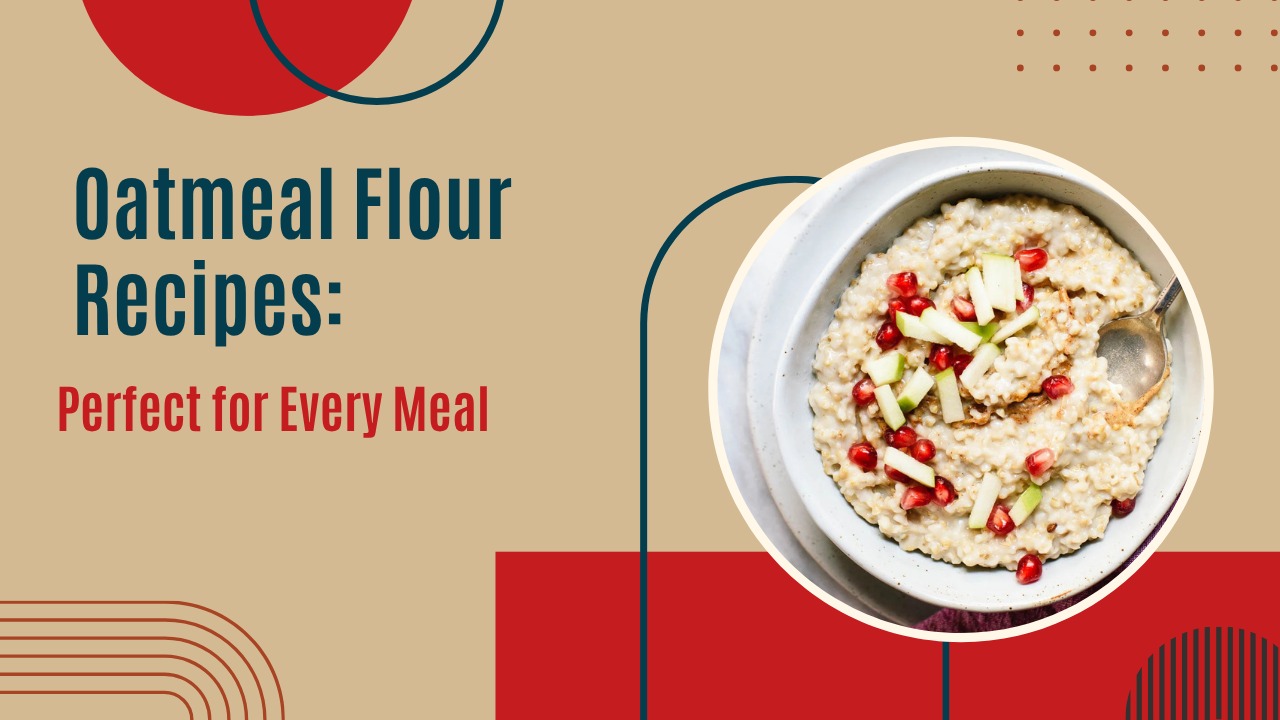Oatmeal flour recipes are gaining popularity as more people seek healthier alternatives to refined ingredients. Made by grinding whole oats into a fine powder, oatmeal flour is naturally rich in fiber, vitamins, and minerals. It’s especially valuable for those following gluten-free diets, provided it’s made from certified gluten-free oats. Its mild, slightly sweet flavor makes it a favorite among health-conscious bakers and cooks.
One of the biggest advantages of oatmeal flour recipes is their versatility. From pancakes and muffins to bread and cookies, oat flour can be used in a wide variety of dishes. It provides a soft texture and helps retain moisture, making baked goods taste fresh longer. It also works well in savory recipes like veggie burgers or as a thickener for soups.
Making your own oat flour at home is simple—just blend rolled oats until fine. With so many delicious possibilities, oatmeal flour recipes are a smart, wholesome choice for everyday cooking.
In this in-depth article, we’ll cover everything you need to know about oatmeal flour. From how it’s formed, when to use it, why it matters, and how it transforms your recipes, to our top 8 oatmeal flour tips with specific benefits and ingredients—this is your complete guide to mastering oat flour in your kitchen.
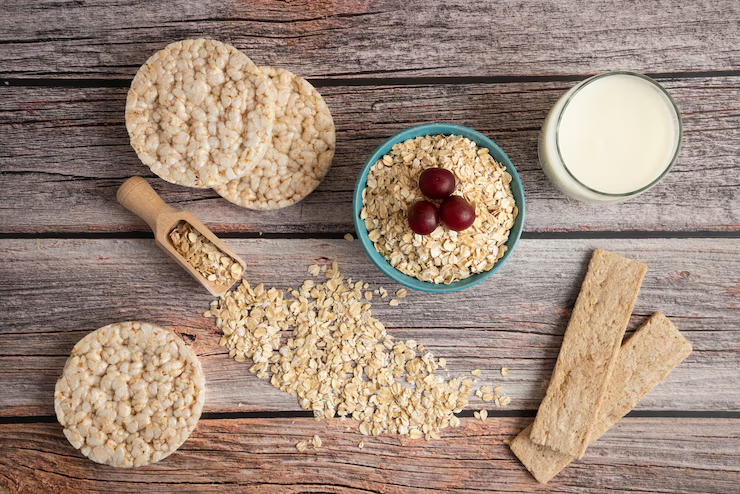
What is Oatmeal Flour ?
Oatmeal flour recipes begin with a simple yet nutritious base: finely ground oats. Whether made from rolled oats, old-fashioned oats, or steel-cut oats, oatmeal flour offers a light, powdery texture similar to wheat flour. Its naturally gluten-free nature (when made from certified uncontaminated oats) makes it a fantastic choice for those with gluten sensitivities or celiac disease.
The mild, nutty flavor of oatmeal flour lends itself beautifully to both sweet and savory dishes. Oatmeal flour recipes can include pancakes, muffins, cookies, and even pizza crusts or flatbreads. Its moisture-retaining properties also make baked goods soft and tender, while its fiber content helps support better digestion and keeps you feeling full longer.
By using oatmeal flour in place of refined white flour, you not only enhance the taste but also increase the nutritional value of your meals. Embracing oatmeal flour recipes is an easy and wholesome way to upgrade your everyday cooking.
How It’s Made: Oatmeal flour is produced by grinding oats into a powder using a blender, food processor, or commercial milling machine.
It retains the fiber and nutrients found in whole oats, unlike many processed white flours.
Nutritional Profile (Per 1/4 Cup):
Calories: ~120
Protein: 4g
Fiber: 3g
Fat: 2g
Carbs: 20g
Vitamins & Minerals: Iron, Magnesium, Zinc, B Vitamins
Why Use Oatmeal Flour ?
Health Benefits:
Heart Health: Rich in beta-glucan, a soluble fiber that lowers cholesterol.
Blood Sugar Control: Slows digestion and prevents blood sugar spikes.
Digestive Health: High in fiber, aiding regular bowel movements.
Weight Management: Keeps you full longer, reducing overeating.
Dietary Needs:
Gluten-sensitive or celiac individuals can enjoy baked goods safely using certified gluten-free oat flour.
A great alternative for those looking to avoid refined white flour.
Culinary Benefits:
Adds a naturally sweet, nutty flavor to recipes.
Improves the texture of baked goods like muffins, cookies, and pancakes.
When and How to Use Oatmeal Flour
Oatmeal flour can be used in many recipes either as:
A full replacement for wheat flour (in some recipes).
A partial substitution (often 25–50%) to boost nutrition.
Ideal for:
Muffins
Pancakes
Waffles
Cookies
Quick breads
Pie crusts
Thickeners for soups & sauces
How to Substitute:
1 cup wheat flour = 1 1/3 cup oat flour (roughly)
You may need to add an extra egg or binding agent since oat flour has less gluten and binding power than wheat flour.
How to Make Oatmeal Flour at Home
Oatmeal flour recipes start with a simple homemade ingredient: oat flour. Making oatmeal flour at home is incredibly easy and cost-effective. All you need is rolled oats (or old-fashioned oats) and a high-speed blender or food processor. Just add the oats to the blender and pulse until you achieve a fine, flour-like texture.
Homemade oat flour is perfect for those who want to control ingredients and ensure freshness in their oatmeal flour recipes. You can also make small or large batches depending on your needs. For gluten-free cooking, be sure to use certified gluten-free oats to avoid cross-contamination.
Store your homemade oatmeal flour in an airtight container in a cool, dry place for up to two months. With this basic kitchen staple ready, you can explore a wide range of oatmeal flour recipes, from pancakes and muffins to cookies, breads, and more—all with a healthy, hearty twist.
Ingredients:
1 cup rolled oats (or any oats of your choice)
Steps:
Add oats to a high-speed blender or food processor.
Pulse for 30-60 seconds until it turns into a fine flour.
Sift if needed for a finer texture.
Store in an airtight container for up to 2 months.
Tip: Use certified gluten-free oats if you’re baking for someone with gluten intolerance.
Top Tips for Oatmeal Flour Recipes
Start With Half & Half Blending
Oatmeal flour recipes can sometimes produce a denser texture compared to those made with all-purpose flour. That’s why it’s often best to start with a half-and-half blending method—using half oatmeal flour and half another flour like whole wheat or all-purpose. This approach helps maintain the desired texture and structure, especially in baked goods like muffins, pancakes, and quick breads.
By gradually introducing oatmeal flour in this way, you allow your taste buds and your baking techniques to adjust. The nutty flavor and added fiber of oatmeal flour shine through, while the supporting flour helps the batter rise properly and hold together. This technique is especially useful when modifying your favorite traditional recipes.
Once you’re confident with the results, you can begin experimenting with using more oatmeal flour. Whether you’re making cookies or breakfast bars, this flexible method ensures your oatmeal flour recipes remain light, delicious, and nutrient-rich every time.
Tip: When new to oat flour, start by replacing half the wheat flour with oat flour in recipes.
Benefit: Improves the texture and nutritional profile without compromising structure.
Example Recipe:
Healthy Banana Muffins
1 cup whole wheat flour
1 cup oat flour
2 bananas
1 egg
1/2 cup Greek yogurt
1 tsp baking soda
1/4 cup honey
Add a Binding Agent

Oatmeal flour recipes often require a little help when it comes to structure and texture. Since oat flour lacks gluten—the protein that gives traditional flour elasticity and binding power—it’s important to add a suitable binding agent when using it in baking. Without this addition, your baked goods may turn out crumbly or fall apart.
Common binding agents include eggs, flaxseed meal mixed with water (as a vegan alternative), chia seeds, or even mashed bananas or applesauce. These ingredients not only help hold the recipe together but also enhance the nutritional value. Depending on what you’re making—cookies, pancakes, or muffins—your choice of binder may vary.
Adding a binding agent is key to achieving satisfying results with oatmeal flour recipes. It ensures your baked goods stay moist and intact while maintaining their shape. With the right balance of oat flour and binders, your dishes can be both healthy and structurally sound.
Tip: Use eggs, flaxseed meal, chia seeds, or xanthan gum when replacing all-purpose flour.
Benefit: Prevents crumbling and ensures structure in gluten-free baking.
Example Ingredient:
1 tbsp ground flaxseed + 3 tbsp water = 1 flax egg
Good For: Pancakes, cookies, muffins.
Don’t Overmix the Batter
Oatmeal flour recipes require a gentle touch when mixing batter. Unlike wheat flour, oat flour lacks gluten, which means there’s no risk of overdeveloping the protein structure. However, overmixing can still lead to dense, tough baked goods because it disrupts air pockets and breaks down the batter’s natural texture.
When preparing muffins, pancakes, or quick breads with oatmeal flour, mix just until the wet and dry ingredients are combined. A few lumps in the batter are perfectly fine and often result in a lighter, fluffier texture. This technique preserves moisture and encourages better rise during baking.
Whether you’re new to baking or adjusting your traditional recipes, keeping this tip in mind can make a big difference. The key to successful oatmeal flour recipes is treating the batter gently. With less stirring and more mindfulness, you’ll enjoy baked goods that are soft, tender, and full of wholesome flavor.
Tip: Stir just until combined when using oatmeal flour.
Benefit: Prevents dense and chewy baked goods.
Recipe Tip: For fluffy oat pancakes, mix dry and wet ingredients separately before combining.
Combine with Almond or Coconut Flour
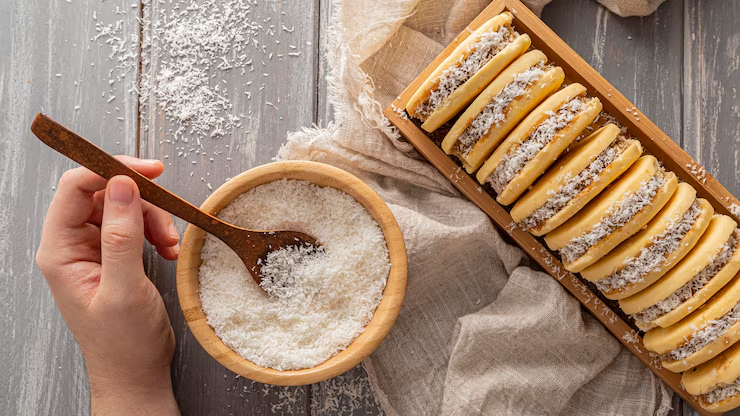
Oatmeal flour recipes can be made even more delicious and nutritious by combining oat flour with almond or coconut flour. Each of these flours brings unique benefits to your recipes. Almond flour adds moisture, healthy fats, and a subtle nutty flavor, while coconut flour is rich in fiber and naturally sweet, perfect for low-carb or gluten-free diets.
Blending oatmeal flour with these alternatives improves texture and flavor balance. Since oat flour is soft but can be dense, almond or coconut flour can lighten the final product, especially in baked goods like muffins, cakes, or cookies. A typical ratio might be 1 part oatmeal flour to 1 part almond or coconut flour, depending on the recipe.
Experimenting with this combination can elevate your oatmeal flour recipes to a new level. Whether you’re baking for health reasons or flavor preferences, mixing flours creates a well-rounded, wholesome result that’s both satisfying and nourishing.
Tip: Use oat flour with almond or coconut flour for flavor and nutrition.
Benefit: Adds healthy fats and improves crumb texture.
Recipe Idea:
Oat & Almond Flour Chocolate Chip Cookies
1 cup oat flour
1/2 cup almond flour
1/2 cup coconut sugar
1/2 cup butter
1 egg
Chocolate chips
Add Moisture with Yogurt or Fruit Puree
Oatmeal flour recipes often benefit from added moisture, as oat flour tends to absorb more liquid than traditional wheat flour. Without enough moisture, baked goods can become dry or crumbly. That’s where ingredients like yogurt or fruit puree come in handy. They not only keep your recipes soft and tender but also enhance flavor and nutrition.
Greek yogurt, for example, adds protein and a creamy texture, making muffins and pancakes rich and satisfying. Fruit purees like mashed banana, applesauce, or pumpkin puree offer natural sweetness while helping retain moisture. These swaps are especially useful in healthier versions of cookies, breads, and cakes.
Incorporating moisture-rich ingredients is a key trick for success with oatmeal flour recipes. Whether you’re aiming for dairy-free, low-sugar, or high-protein options, yogurt and fruit puree are versatile solutions that improve both taste and texture while keeping your baked goods wholesome and enjoyable.
Tip: Oat flour absorbs more moisture than wheat flour.
Benefit: Prevents dryness and adds flavor.
Good Add-ins: Mashed banana, applesauce, pumpkin puree, Greek yogurt.
Recipe Suggestion: Pumpkin oat flour muffins with cinnamon & nutmeg.
Use for Crispy Coating
Oatmeal flour recipes aren’t limited to baking—this versatile flour also works wonderfully as a crispy coating for savory dishes. Whether you’re making baked chicken tenders, fish fillets, or even veggie fritters, oat flour can create a light, golden crust that adds both flavor and texture.
To use it as a coating, simply dredge your protein or vegetables in oat flour before dipping them in egg wash and breadcrumbs or crushed oats for extra crunch. Oatmeal flour’s naturally nutty flavor pairs well with herbs and spices, giving your dish a wholesome, rustic touch without overpowering the main ingredients.
Incorporating this technique into your oatmeal flour recipes brings creativity to your kitchen while keeping meals healthier. Unlike refined flours, oat flour is rich in fiber and nutrients, making it a smarter choice for breading. Plus, it’s gluten-free when sourced properly, making it suitable for a wide range of dietary needs.
Tip: Use oat flour to coat fish, chicken, or tofu before baking or frying.
Benefit: Adds a nutty crunch and a healthy twist to your crust.
Try: Baked chicken tenders with oat flour + paprika + garlic powder coating.
Perfect for Gluten-Free Roux or Thickener
Oatmeal flour recipes go far beyond baked goods, offering smart solutions for gluten-free cooking techniques—like making a roux or thickening sauces. Traditional roux is made with wheat flour and fat, but oatmeal flour is a fantastic alternative that delivers a smooth, nutty base for soups, stews, and gravies.
To make a gluten-free roux, simply heat butter or oil in a pan and whisk in oatmeal flour until it forms a paste. Cook it briefly to eliminate the raw taste, then slowly add your liquid of choice, stirring constantly. The result is a rich, velvety consistency perfect for creamy sauces or hearty chowders.
Incorporating oat flour as a thickener in your favorite oatmeal flour recipes not only enhances texture but also adds nutritional value. It’s high in soluble fiber, which supports digestion, and its mild taste blends well in both savory and sweet dishes—making it a pantry essential for health-conscious cooks.
Tip: Use oat flour as a thickening agent in soups or sauces.
Benefit: Adds creaminess and mild flavor without gluten.
Try:
Oat flour + butter roux
Oat flour gravy with vegetable broth & herbs
Freeze the Extra Flour
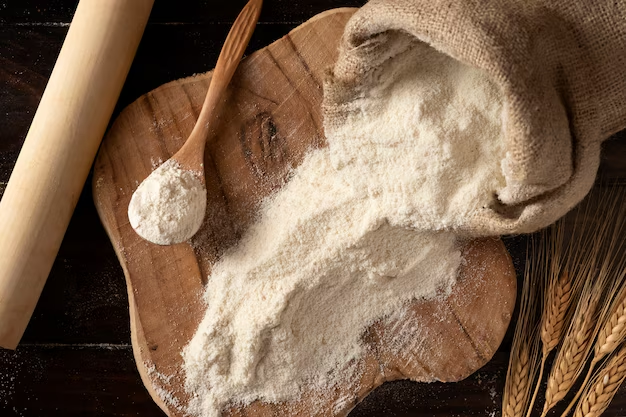
Oatmeal flour recipes often call for small amounts of flour, but making a large batch in advance can save time in the kitchen. Once you’ve ground your oats into a fine powder using a blender or food processor, it’s smart to store the extra properly. Freezing is one of the best ways to preserve the freshness and prevent spoilage.
Place the flour in an airtight container or zip-lock bag, removing as much air as possible. Label it with the date, and store it in the freezer for up to three months. This method keeps the natural oils in the oats from turning rancid, ensuring that your oat flour stays fresh and ready to use.
Having frozen oat flour on hand means you’re always prepared to whip up quick and easy oatmeal flour recipes, from pancakes and muffins to savory coatings and thickening agents—making healthy cooking even more convenient.
Tip: Store excess homemade oat flour in the freezer.
Benefit: Keeps it fresh longer and prevents it from going rancid.
Storage: Use airtight freezer-safe containers or bags. Label with date.
Popular Oatmeal Flour Recipes to Try
Here are a few oatmeal flour-based recipes to get you started:
Oat Flour Pancakes
1 cup oat flour
1 egg
3/4 cup almond milk
1 tbsp honey
1 tsp baking powder
1/2 tsp cinnamon
Gluten-Free Chocolate Chip Cookies
1 ½ cups oat flour
½ tsp baking soda
½ cup butter
½ cup brown sugar
1 egg
1 tsp vanilla
1 cup chocolate chips
Oat Flour Pizza Crust
2 cups oat flour
2 eggs
1/4 cup Greek yogurt
1 tsp Italian seasoning
Bake, then top with sauce, cheese, and veggies
Oat Flour Banana Bread
2 cups oat flour
3 ripe bananas
1/2 cup honey
2 eggs
1 tsp baking soda
1/2 tsp cinnamon
Conclusion
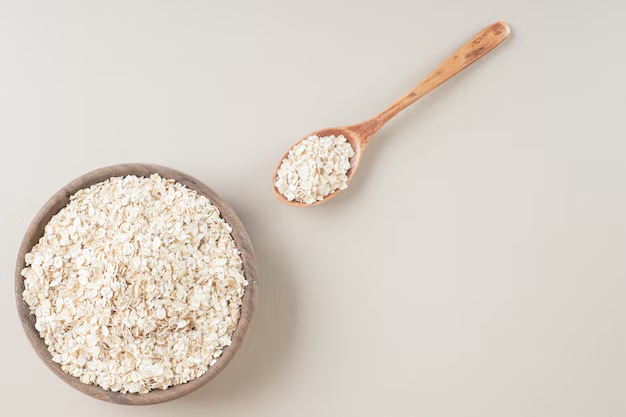
Oatmeal flour recipes are a game-changer for anyone seeking healthier, more flavorful cooking. This naturally gluten-free flour offers a mild, slightly sweet taste and a boost of fiber, making it a fantastic substitute for refined white flours. Whether you’re baking cookies, pancakes, or savory crusts, oat flour delivers both nutrition and taste in every bite.
It’s no surprise that both home cooks and culinary professionals are turning to oatmeal flour for more wholesome meal options. Its adaptability makes it perfect for gluten-sensitive diets or anyone simply trying to eat cleaner. Plus, it pairs well with a variety of other flours and ingredients.
By applying smart techniques—such as blending it with almond flour, adding moisture through yogurt or fruit purée, and using binders—you can create consistently delicious oatmeal flour recipes. Stocking your pantry with this versatile flour is a step toward more mindful, nutrient-rich cooking you’ll enjoy every day.
FAQs
Q1. What are some easy oatmeal flour recipes for beginners ?
Some simple oatmeal flour recipes include pancakes, muffins, banana bread, and cookies. These recipes are beginner-friendly and perfect for experimenting with oat flour’s soft texture and mild flavor.
Q2. How should I store oatmeal flour ?
Store it in an airtight container in a cool, dry place. For long-term storage, freeze it to keep it fresh—especially if you plan to make oatmeal flour recipes regularly.
Q3. Can I replace all-purpose flour with oat flour in any recipe ?
Not always. While many oatmeal flour recipes are designed specifically for oat flour, substituting 100% oat flour in traditional recipes may affect texture and binding. It’s best to blend it with other flours or add binding agents.
Q4. Is oatmeal flour gluten-free ?
Yes—if it’s made from certified gluten-free oats. Many oatmeal flour recipes are great for those with gluten sensitivity, but always check labels to be safe.
Q5. Can I make oatmeal flour at home ?
Absolutely! Just blend rolled oats into a fine powder using a blender or food processor. Fresh oat flour works great in homemade oatmeal flour recipes.


